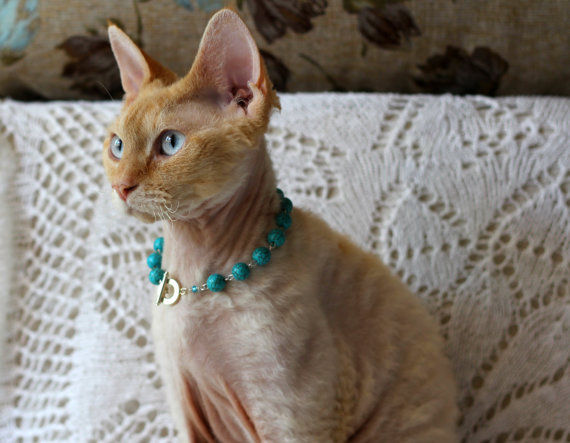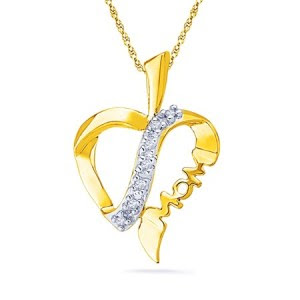A short history: jewels for cats and inspired by cats
I’m here to talk about jewelry inspired by the garden-variety domestic
shorthair, the kind that prowls the jungle of our living rooms.
We’ve seen $3.2mil diamond dog collars, but what about the feline? Such elegant creatures. Surely there must be high-octane bling out there for them? Not so much. There are some cute “non-precious” baubles cat owners may find hard to resist. The cats themselves? Well….
We don’t “show” cats publicly, as we do dogs. Cats are more of a private pleasure, which may be why you won’t find many show-stopping baubles designed for them. You can find some cheap but fetching faux-pearl cat collars and a few handmade ones with gemstone pendants to dangle from them on Etsy, but most are tagged “dog” as well as “cat.”
and a few handmade ones with gemstone pendants to dangle from them on Etsy, but most are tagged “dog” as well as “cat.”
I’d feel offended by this lack of luxury for my feline friends, except I suspect they’d roll their perfect eyes: Honey, who needs help when you look this good? Mine always resented any attempt to collar them anyway. My last two were males and neither would keep a collar on for long. I don’t know how they managed to ditch them but they did, the moment I turned my back. I had to resort to those plastic lock-tabs: not exactly high-end.
Paddy would have rocked this skull collar by TOM K of Etsy. Paddy was pretty bad-ass, a brawny ginger tabby who was always getting into street fights, then charming saucers of milk from neighborhood ladies.
High-karat gold would have better suited Fred: tall, sleek, black and housebound. In fact, a small version of the ancient gold collar I showed here would have transformed him into the Sphinx. People were always comparing Fred to the Sphinx, despite what a goofball he actually was.
Why do we make automatic associations with Ancient Egypt when we see a slender cat sitting upright, in that graceful, mysterious, unflinching way? Maybe because stylized cats are always popping up in Greek art.
Cats were revered in Ancient Egypt, which is why the seated cat is a classic motif of ancient Greek jewelry.
This bronze figure of cat-headed goddess Bastet, right, now in the British Museum, was made around the same time as the second necklace, Late Period Egypt, about six centuries B.C. Bastet translates literally to “she of the ointment jar,” the museum catalog tells us, reflecting her soothing and peaceful nature.
“Bastet was the protective aspect of the feline goddess, perhaps because the cat takes good care of its kittens,” according to the museum. “The aggressive aspect is represented by Sekhmet, goddess of destruction.”
Well, that about sums up the cat, doesn’t it?
Egyptians worshipped both extremes with great fanfare, including the festival of Bastet, which sounds like the ancient version of a rave.
Around four centuries B.C., Greek historian Herodotus described the lead-up to this festival, a procession by boats filled with musicians playing instruments, singing and clapping. When the boats approached, villagers would run out and dance along the banks, calling out to the band. The festival itself, held at the temple of Bastet, involve “a large number of sacrifices and the consumption of copious amounts of wine by the crowds that attended.”
But it wasn’t only Egypt that held the cat in high regard. The feline is lovingly depicted in paintings and gem carvings from ancient China and Japan as well.
Some jade cat pendants, carved in relief during the Qing Dynasty, 18th/19th century, are coming up for sale this month at Sotheby’s and Christie’s, including a couple cats cuddling up with giant dragonflies. This cat at Sotheby’s Asian Art auction is curled up on a palm fan. He’s being sold with another pendant with a jade cat on a plantain leaf.
“The cat, a symbol of longevity, and a dragonfly, represents wishes for a long life, and would have made a suitable birthday present,” according to Sotheby’s catalog.
By turn-of-the-century Japan, the cat has gotten lazy, fat and happy in the form of ivory netsuke.
This one is in the form of locket on a sapphire and diamond rosary bead necklace sold at Bonhams, Oxford, in 2013. It depicts a maiden holding a cat, her arm accented with a cuff of rose-cut diamonds. The catalog doesn’t specify when it was made, but it looks Pre-Raphaelite.
Doesn’t look like Dante Gabriel Rossetti painted a girl with a cat, but American painter William Morris Hunt did. Here is Hunt’s “Girl with Cat” from 1856, from Boston’s Museum of Fine Art, beside my niece with hers.
Just to make the point that, while we might not be making diamond collars for them or worshipping cat goddesses, some things (about cats) haven’t changed.
Women are not only crazy about gold jewelry but also for 1 3 carat diamond earrings . It is symbol of status and style for them. If you have any inquiry then please contact us.
We’ve seen $3.2mil diamond dog collars, but what about the feline? Such elegant creatures. Surely there must be high-octane bling out there for them? Not so much. There are some cute “non-precious” baubles cat owners may find hard to resist. The cats themselves? Well….
We don’t “show” cats publicly, as we do dogs. Cats are more of a private pleasure, which may be why you won’t find many show-stopping baubles designed for them. You can find some cheap but fetching faux-pearl cat collars
I’d feel offended by this lack of luxury for my feline friends, except I suspect they’d roll their perfect eyes: Honey, who needs help when you look this good? Mine always resented any attempt to collar them anyway. My last two were males and neither would keep a collar on for long. I don’t know how they managed to ditch them but they did, the moment I turned my back. I had to resort to those plastic lock-tabs: not exactly high-end.
Paddy would have rocked this skull collar by TOM K of Etsy. Paddy was pretty bad-ass, a brawny ginger tabby who was always getting into street fights, then charming saucers of milk from neighborhood ladies.
High-karat gold would have better suited Fred: tall, sleek, black and housebound. In fact, a small version of the ancient gold collar I showed here would have transformed him into the Sphinx. People were always comparing Fred to the Sphinx, despite what a goofball he actually was.
Why do we make automatic associations with Ancient Egypt when we see a slender cat sitting upright, in that graceful, mysterious, unflinching way? Maybe because stylized cats are always popping up in Greek art.
Cats were revered in Ancient Egypt, which is why the seated cat is a classic motif of ancient Greek jewelry.
This bronze figure of cat-headed goddess Bastet, right, now in the British Museum, was made around the same time as the second necklace, Late Period Egypt, about six centuries B.C. Bastet translates literally to “she of the ointment jar,” the museum catalog tells us, reflecting her soothing and peaceful nature.
“Bastet was the protective aspect of the feline goddess, perhaps because the cat takes good care of its kittens,” according to the museum. “The aggressive aspect is represented by Sekhmet, goddess of destruction.”
Well, that about sums up the cat, doesn’t it?
Egyptians worshipped both extremes with great fanfare, including the festival of Bastet, which sounds like the ancient version of a rave.
Around four centuries B.C., Greek historian Herodotus described the lead-up to this festival, a procession by boats filled with musicians playing instruments, singing and clapping. When the boats approached, villagers would run out and dance along the banks, calling out to the band. The festival itself, held at the temple of Bastet, involve “a large number of sacrifices and the consumption of copious amounts of wine by the crowds that attended.”
But it wasn’t only Egypt that held the cat in high regard. The feline is lovingly depicted in paintings and gem carvings from ancient China and Japan as well.
Some jade cat pendants, carved in relief during the Qing Dynasty, 18th/19th century, are coming up for sale this month at Sotheby’s and Christie’s, including a couple cats cuddling up with giant dragonflies. This cat at Sotheby’s Asian Art auction is curled up on a palm fan. He’s being sold with another pendant with a jade cat on a plantain leaf.
“The cat, a symbol of longevity, and a dragonfly, represents wishes for a long life, and would have made a suitable birthday present,” according to Sotheby’s catalog.
By turn-of-the-century Japan, the cat has gotten lazy, fat and happy in the form of ivory netsuke.
This one is in the form of locket on a sapphire and diamond rosary bead necklace sold at Bonhams, Oxford, in 2013. It depicts a maiden holding a cat, her arm accented with a cuff of rose-cut diamonds. The catalog doesn’t specify when it was made, but it looks Pre-Raphaelite.
Doesn’t look like Dante Gabriel Rossetti painted a girl with a cat, but American painter William Morris Hunt did. Here is Hunt’s “Girl with Cat” from 1856, from Boston’s Museum of Fine Art, beside my niece with hers.
Just to make the point that, while we might not be making diamond collars for them or worshipping cat goddesses, some things (about cats) haven’t changed.
Women are not only crazy about gold jewelry but also for 1 3 carat diamond earrings . It is symbol of status and style for them. If you have any inquiry then please contact us.










Comments